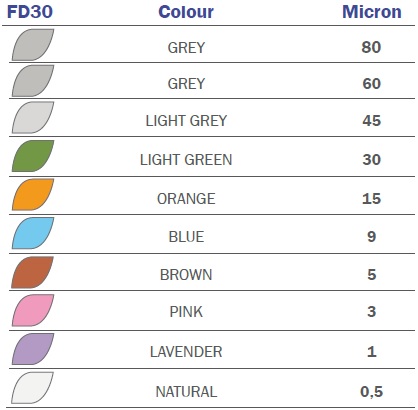Diamond Lapping film is a type of product that provides a finishing solution impossible to achieve with other abrasive and polishing technologies.
The demands of the market for harder surfaces to be finished quicker and with an improved quality has made Diamond Lapping Film a key element towards achieving this goal.
Due to the product features as detailed below, the application for this product range is wide and varied and includes finishing components in the electronics industry, precision mechanical parts, general industrial users and DIY.
Diamond Lapping Film characteristics and features
Diamond Lapping Film is defined as a slurry coated microabrasive film where the abrasive grains are coated with a layer of resin which acts as a bonding to the PET backing film.
The coating process is performed in a clean room environment in order to avoid any external contamination and to guarantee the best consistency of the finished product.
Also, the diamond powder is strictly calibrated to avoid the presence of any larger grains over the declared nominal grain size.

The backing is a calibrated PET film 75µm/3mil m thickness without any coating or printing on the underside.

To maintain uniform flatness of the film, there is no printing on the underside because the increase in thickness from the layer of ink would strongly influence the consistency of the finish.
The grits are identifiable by a specific colour code.

Diamond Lapping Film advantages and benefits
The main advantage over traditional lapping films which use conventional abrasive grains such as Aluminium Oxide or Silicon Carbide, is that Diamond Lapping Film uses a diamond superabrasive resulting in a higher performance in cutting and durability.
The chart below shows the relative hardness of the main abrasive minerals and typical workpiece materials using three different hardness scales: Mohs, Vickers and Knoop.

Due to the hardness and shape of the diamond, Diamond Lapping Film optimizes the finishing process on very hard substrates. When using traditional abrasive grains the process of removing the surface layer becomes a time consuming and uneconomical process producing an inconsistent quality. Both these issues can be easily avoided by using superabrasive diamond grain.
As compared with traditional lapping and polishing films, these key advantages clearly outweigh the higher finished product cost of using diamond grain.
As a general rule, a diamond product should be evaluated where the hardness of the substrate is greater than 60 – 65 HRc. This evaluation depends on the finishing process to be used and the results to be achieved, and is valid for both a rough polishing process where coarse grits are used and for fine lapping and mirror finishing.
Application examples and various products converted from Diamond Lapping Film
Given market demands to process a wide variety of hard materials, Diamond Lapping Film comes in various forms for use in different application techniques which may require abrasive rolls, sheets, discs or belts.
Focusing on the superfinishing of cylindrical components using microabrasive rolls, the most common workpiece materials are:
- Hard cast irons
- Thermal sprayed surfaces
- DLC coated
- Tungsten carbides
- Hard polymers and rubbers
- Ceramics
The same materials could be finished using discs in flat surface lapping and metallographic applications or manually using sheets and belts.
Another specialized and niche application for PSA (adhesive) discs is gemstone polishing.

Diamond Lapping Film is commonly used for knife, razor and blade sharpening. Precision Polishing provides PSA (adhesive) sheets which are easily mounted on a sanding block for use in the final steps on the jig.
Focusing on the electronics market, FD30 is used for the polishing of ceramic fiber optic connector ferrules to achieve the correct geometry resulting in the best light transmission.
FD30 Diamond Lapping Film is available in standard form as:
- Rolls 50mm, 100mm and 200mm width X 5m, 15m or 50m
- Sheets 150mm X 150mm and 230mm X 280mm both in plain and PSA versions
- Discs 127mm/5”, 150mm/6”, 200mm/8”, 250mm/10”, 300mm/12”, 350mm and 400mm both in plain and PSA versions
- Belts
All the other sizes are available on request.




